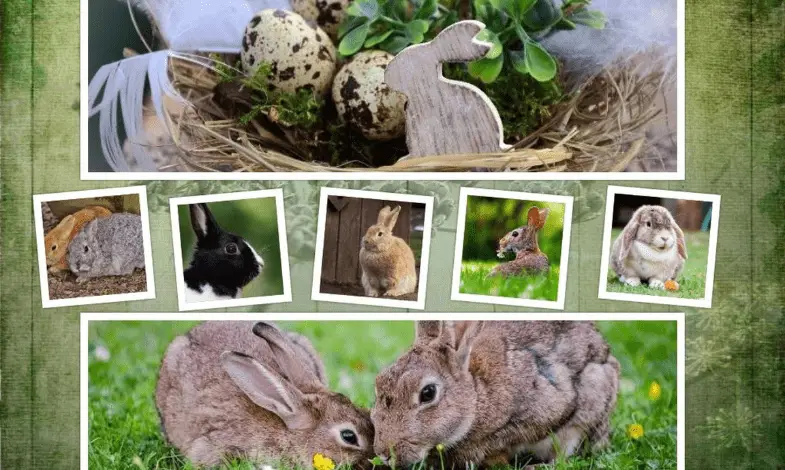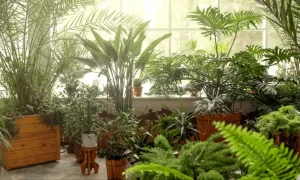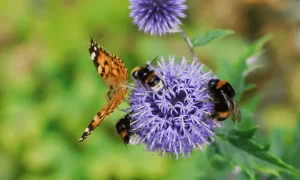How Can Speciation Of Plants Benefit Humans: Plant speciation is an important evolutionary process that contributes to plant diversity on our planet. The creation of new plant species has been aided by global warming, urbanization, deforestation, and earth movements. This process of plant speciation has resulted in plant diversity, which is essential to the ecosystems on which we rely. There are many ways through which the speciation of plants can benefit humans.
The meaning of a species in plants has been a serious impediment to botanical studies of the so-called speciation; botanists have frequently expressed doubt that plant species even exist, owing to frequent reports of interspecific hybrids and because phenotypic variation in some plant groups does not readily assort into discrete categories. These fears were heightened by reports that gene flow within many plant species was so minimal that populations, rather than species, were the most inclusive reproductive units.
Plant speciation benefits humans in the following ways:
- Allowing new drugs and medication are now possible.
- Culture and tourism promotion
- Pesticides are being used less frequently.
- Promoting pollinator diversity
- Producing more beneficial crops
This article explains what plant speciation is and how it benefits us, humans.
Contents
- What Is A Species?
- What Causes the Speciation in the Plants?
- 1. Urban development
- 2. Disturbance of zones near the poles
- 3. Botanical Gardens
- How Does Speciation of Plants Benefit The Humans?
- 1. Allowing the development of novel drugs
- 2. Culture and tourism promotion
- 3. Minimizing the use of insecticides
- 4. Increasing the diversity of pollinators
- 5. Growing more beneficial crops
- Conclusion
- How can the speciation of plants help in reducing the use of insecticides?
- How can speciation lead to growing better crops?
What Is A Species?
To begin, what makes a species a species? A species is defined as the biggest group of creatures in which two individuals can generate viable offspring. The wolf and domestic dog, for example, can mate and have fruitful offspring. The wolf and domestic dog are the same species because their pups may reproduce.
In another case, the horse and donkey are two distinct species. When a horse and a donkey interbreed, mules are the hybrid offspring of the two species. The mule is sterile and unable to produce its own children. As a result, horses and donkeys are two distinct species.
What Causes the Speciation in the Plants?
According to one study, there are three key drivers of plant speciation:
1. Urban development
The ever-increasing development of towns and buildings is altering the environment in which plants flourish. Temperatures in cities are higher than in non-urban areas due to urbanization and human activity density. Plants introduced into these habitats have evolved to lack space, increased humidity, and greater temperatures.
2. Disturbance of zones near the poles
Climate change is more pronounced near the poles than in the remainder of the hemisphere. This suggests that a huge number of plant species are expected to evolve between the arctic and arid regions. When the same plant species grow in two different settings, it diverges and develops characteristics to adapt to its new environment. Characteristics that are advantageous in the new environment are likely to be passed down to the children.
3. Botanical Gardens
Plant speciation is more likely to occur when horticulturists and plant enthusiasts collect exotic species and nurture them in a small region. Botanic gardens are what we call them now. Botanic gardens impact new plant species because of the high likelihood of interspecific pollen transmission via pollinating insects.
How Does Speciation of Plants Benefit The Humans?
Plant speciation promotes plant diversity, which leads to the following possibilities:
1. Allowing the development of novel drugs
The speciation of new plant kinds makes curing a greater spectrum of ailments possible. In Europe, about 1,300 medicinal plants are used, with 90 percent harvested from wild resources. Natural sources are used in approximately 118 of the top 150 prescription medications in the United States. Furthermore, up to 80% of people in developing nations rely on herbal remedies for their treatment.
Unfortunately, over-harvesting and habitat degradation have resulted in an ever-increasing incidence of plant extinction. The extinction of rare flora suggests that we are losing potential medications that could be used to cure specific diseases.
2. Culture and tourism promotion
Plant diversity attracts all forms of life, resulting in a thriving ecosystem. A well-balanced environment fosters a distinct culture for living species and can provide nations with a distinct character.
For example, Australia has a distinct flora and fauna as a result of its geographic isolation, which has resulted in quite diverse species from the rest of the world. Plants had to adapt to warmer habitats once Australia moved from Antarctica 50 million years ago. Australia’s diverse ecosystems, which have developed over thousands of years, attract thousands of international visitors yearly.
3. Minimizing the use of insecticides
According to a study, plant diversity naturally limits plant-eating insects in agriculture in two ways. The first is that a botanic garden attracts insect predators such as spiders, beetles, and wasps by providing more shelters for them to avoid being eaten by birds. The second is that when plant kinds are crowded together, insects are unlikely to discover their favorite plant species and will move on to other places. Combining the aforementioned two criteria prohibits insects from generating a pest outbreak, saving growers time and money.
4. Increasing the diversity of pollinators
The diversity of natural pollinators is increased by having a varied range of plant species. Honeybees are well-known for their pollination operations, which involve transporting pollen between plants to fertilize them. One of the essential pollinators of food crops is honeybees. Butterflies, wasps, flies, midges, moths, and beetles are among the other pollinators. The Butterfly Bush, for example, attracts butterflies, the Heliotrope Flower attracts moths, and the Goldenrod Flowers attract beetles.
5. Growing more beneficial crops
Modern genetic engineering technology has enabled the production of crops with more desirable features. Tomato plants, for example, have been genetically modified to produce larger and stronger tomatoes. They were made to last longer and were sent further away from where they were grown.
Another case in point is genetically engineering corn to create a protein that kills various insects. The potential benefits of human intervention in the creation of new plant species are limitless:
- Food that is nutritious
- Food that tastes better
- Weather-resistant
- Plants that grow faster
- Have a longer shelf life
Conclusion
Plant speciation is set to have a fascinating decade. The widespread availability of genomic methods and materials for crop and noncrop species ranging from green algae to mosses to angiosperms will help us better understand speciation’s genetic and ecological origins. These resources will not only aid in the cloning and functional characterization of genes underlying reproductive barriers. Still, they will also allow for the quantification of the effects of particular changes or alleles on reproductive isolation or capability in natural populations. Similarly, the widespread use of molecular phylogenetic techniques streamlines comparative research. Human action may be fostering plant diversification by creating previously unseen conditions (e.g., global warming). However, we must be mindful not to push plants to extinction, or else the benefits we have enjoyed for centuries will be lost to us.
Frequently Asked Questions (FAQ)
How can the speciation of plants help in reducing the use of insecticides?
According to a new study, plant diversity naturally restricts the spread of plant-eating insects in agriculture in two ways. A botanic garden, for example, attracts insects that prey on birds, such as spiders, beetles, and wasps, because it provides more places for them to hide and escape being preyed upon by birds. The second point to mention is that when plant types are packed together, insects are less likely to discover their favorite plant species and will instead seek refuge in other locations. When the two conditions listed above are combined, insects are prevented from causing a pest outbreak, saving growers time and money.
How can speciation lead to growing better crops?
Genetic technology in modern times has made it possible to produce crops with more desirable characteristics than before possible. As a result, people now can manage the crops that serve us in a very good manner.




